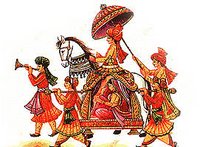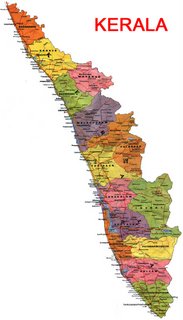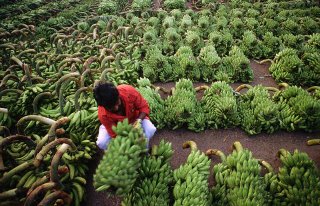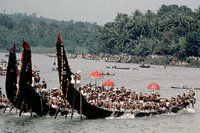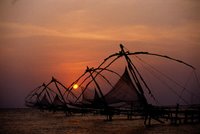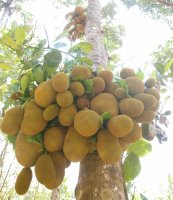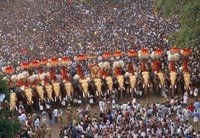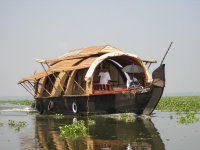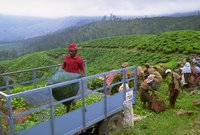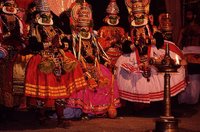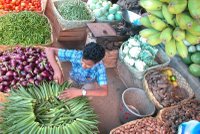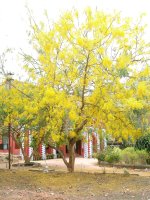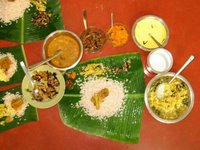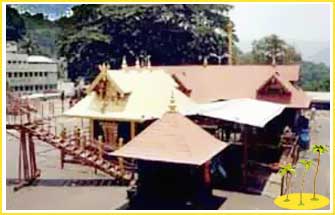 SABARIMALA: Kerala is a land of temples; perhaps the best known pilgrimage destination in Kerala is Sabarimala, high up in the Sahyadri Mountains(western ghats). Sabarimala Sri Dharmasastha Temple is the most famous and prominent among all the Sastha Temples. It is believed that "Parasurama Maharshi" who retrieved Kerala from the sea by throwing his axe, installed the idol of Ayyappa at Sabarimala to worship Lord Ayyappa.
SABARIMALA: Kerala is a land of temples; perhaps the best known pilgrimage destination in Kerala is Sabarimala, high up in the Sahyadri Mountains(western ghats). Sabarimala Sri Dharmasastha Temple is the most famous and prominent among all the Sastha Temples. It is believed that "Parasurama Maharshi" who retrieved Kerala from the sea by throwing his axe, installed the idol of Ayyappa at Sabarimala to worship Lord Ayyappa.The Lord Ayyappa temple at Sabarimala, 80 kms. from the Pathanamthitta district head quarters, is a National Pilgrim Centre. This famous shrine of Lord Ayyappa is surrounded by hazardous hills like Karimala and Neelimala. Devotees visit Sabarimala after undergoing 41 days of ‘Vritha’ i.e., self-imposed devotional penance. They, with irumudikettu (bundle with offerings to Ayyappa) on their head, climb the mountain ranges and cross the forest bare footed repeatedly chanting ‘Saranam Ayyappa’ which means we seek refuge in Ayyappa. This is probably the only famous temple in Kerala, which does not restrict anybody from visiting it for not being a Hindu.
More informations availabel at http://www.sabarimala.org/
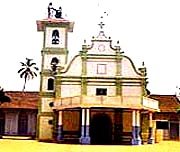 MALAYATTOOR: A a place of prayer and pilgrimage; made rich by the foot steps of St. Thomas the Apostle, who sowed the seeds of Christianity in this part of the world. Revere at his saintly footsteps clearly embedded on the rock - marvel at the Golden cross that sprang up from no where - Yes malayattoor indeed has all these and more.. It is situated 52 kms from Kochi beside the Periyar River at the top of a hill. The pilgrims can reach the place only by foot. This church which was established in AD 900 is believed to have been blessed by St.Thomas, one of the Apostles of Christ.
MALAYATTOOR: A a place of prayer and pilgrimage; made rich by the foot steps of St. Thomas the Apostle, who sowed the seeds of Christianity in this part of the world. Revere at his saintly footsteps clearly embedded on the rock - marvel at the Golden cross that sprang up from no where - Yes malayattoor indeed has all these and more.. It is situated 52 kms from Kochi beside the Periyar River at the top of a hill. The pilgrims can reach the place only by foot. This church which was established in AD 900 is believed to have been blessed by St.Thomas, one of the Apostles of Christ. VARKALA: Is a small town in Kerala, South India. If you're looking for beaches and are fed up with the crowds & prices at Kovalam, then its well worth checking out Varkala. The best times to go, are of course in the season, when the beach extends out all around the cliff face for 500 meters.The beaches around this area are excellent and if you're looking for a cheap holiday Varkala should definitely be on your list. In the off season its really mellow and relaxed, swim & sleep & chill out. Only in December does it get really busy and prices start rocketing till January/February, when it starts to quieten down. But remember most 'tourist' locations in India with beaches will be busy during December, if you want to miss the crowd, head for the hills in Kodiakanal-Tamil Nadu. Varkala has been a Hindu pilgrimage site since the 12th Century. The Janardhana Temple was built during this period and many Hindu's still visit Varkala to this day, for this very reason.
VARKALA: Is a small town in Kerala, South India. If you're looking for beaches and are fed up with the crowds & prices at Kovalam, then its well worth checking out Varkala. The best times to go, are of course in the season, when the beach extends out all around the cliff face for 500 meters.The beaches around this area are excellent and if you're looking for a cheap holiday Varkala should definitely be on your list. In the off season its really mellow and relaxed, swim & sleep & chill out. Only in December does it get really busy and prices start rocketing till January/February, when it starts to quieten down. But remember most 'tourist' locations in India with beaches will be busy during December, if you want to miss the crowd, head for the hills in Kodiakanal-Tamil Nadu. Varkala has been a Hindu pilgrimage site since the 12th Century. The Janardhana Temple was built during this period and many Hindu's still visit Varkala to this day, for this very reason.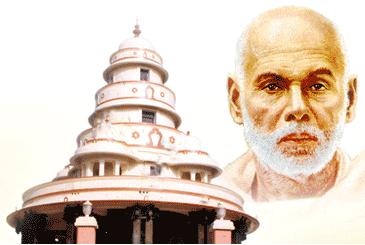 SIVAGIRI: The 'Sivagiri Mutt' is a 'Ashram' founded by the great Hindu reformer and philosopher, Sree Naravana Guru.
SIVAGIRI: The 'Sivagiri Mutt' is a 'Ashram' founded by the great Hindu reformer and philosopher, Sree Naravana Guru.Even decades after the Guru breathed his last here in 1928 AD, his 'Samadhi' (restling place) continues to be thronged by thousands every year. The 'Sivagiri Pilgrimage' is conducted between December 30 and January 1.
The Mutt is also the headquarter of the 'Sree Narayana Dharma Sangham', a religious organisation established by the Guru to propagate his concept of 'One Caste, One Religion, One God'. The Sarada Temple and Sivagiri Mutt set in picturesque hill of Sivagiri near Varkala have now become a place of pilgrimage with great fanfare.
Colourful processions, debates and seminars, public meetings, cultural shows, community feasts, group wedding, rituals all mark the celebrations in Sivagiri hills.
Sree Narayana Guru was one of the greatest social reformers of India and a contemporary of Mahatma Gandhi. His call for equality among people found a great following.
His teachings have had a profound effect on the caste-ridden society of Kerala and helped the state achieve great social progress when compared to the other states of India. Founded many ashrams, the most important being at Sivagiri near Kollam.
ARUVIPPURAM: is a beautiful village in the southern district of Thiruvananthapuram in Kerala. It is famous for the Siva temple established by Sri Narayana Guru. The Guru consecrated the Siva idol in the year 1888. Aruvippuram Sivarathri is a very popular event attended by a large numbers of devotees and followers of Guru.


